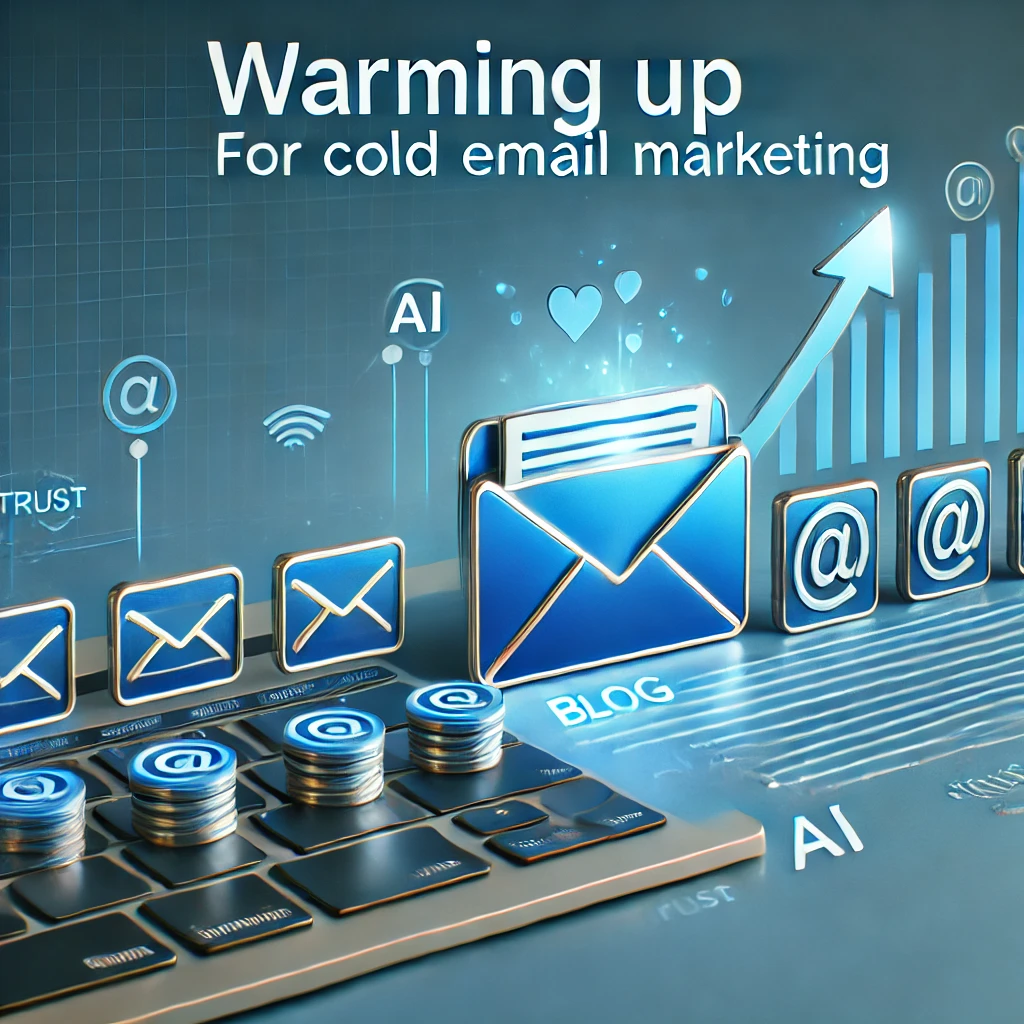So, here’s the thing about cold emailing. You know, sending out emails to people who don’t really know who you are or haven’t signed up for your emails? Yeah, that’s tricky. And if you don’t do it right, you might just end up in the spam folder. Annoying, right?
That’s where email warmup comes into the picture. It’s kinda like when you meet someone new, and instead of bombarding them with everything about you, you take it slow, let them get to know you. That’s pretty much what warming up your email address is about. Our Email Warmup Service helps ensure your emails land in the inbox rather than the spam folder.
What Is Email Warmup?
So, let me break it down. Email warmup is this process where you start by sending a small number of emails from your email account, and then slowly build up over time. The idea is to “train” email providers like Gmail or Outlook to recognize your account as legit and trustworthy.
Basically, if you send 10,000 emails out of nowhere, you’re waving a big red flag to the email gods, and they’ll think, “Spam alert!” They might even block your emails. But if you send just a few at first—10 here, 20 there—then they’re like, “Okay, this seems fine, we trust this person.”
With our Email Warmup Service, you can automate the entire warmup process, ensuring that you build trust with email providers over time.
Why Email Warmup Is a Must for Cold Emails?
When you’re sending cold emails, you’re trying to get through to people who probably weren’t expecting to hear from you. And honestly? ESPs (email service providers) are suspicious of that kind of thing. Why? Because spammers do it all the time.
But it’s not just about spam. Here’s what happens if you don’t warm up your email account first:
- Your Emails Get Sent to Spam: If you send too many emails too fast from a cold account, it’s almost guaranteed that ESPs will flag you. Boom, straight to the spam folder.
- Low Open Rates: You spend all this time crafting the perfect email… but no one opens it because it’s sitting in the spam or junk folder. Frustrating, right?
- Hurt Your Sender Reputation: If you get flagged enough, your sender reputation is toast. And once that happens, good luck getting out of the spam dungeon.
How Does Email Warmup Work?
Alright, so how do you actually “warm up” an email account? Here’s the gist:
- Start Super Small: Send just a few emails a day at first. I’m talking like 10 or 20. Send them to people you know or test accounts that’ll actually open and click your emails. Engagement is key.
- Gradually Increase: After a few days, bump it up. Maybe start sending 50 emails a day. Keep going, but don’t push it too hard. If you suddenly jump to 500 emails out of nowhere, that could trigger the spam filters again.
- Monitor Responses: The more people interact with your emails—opens, clicks, replies—the better. It shows ESPs that people actually like your emails, and it helps build your reputation.
- Watch Out for Bounces: If too many of your emails are bouncing back, that’s a problem. It means your email list might be outdated, and that could hurt your reputation too.
Why You Can’t Skip Warmup When Sending Cold Emails
Okay, so here’s the deal. Without warming up your email, you’re walking into a cold room and shouting at the top of your lungs. It’s not going to end well. Here’s why you need to warm up:
- It Builds Trust: ESPs aren’t going to trust you just because you exist. They need to see that you’re a legit sender, not someone trying to spam people.
- Avoid Spam Filters: If you go from sending zero emails to blasting out 1,000 emails overnight, spam filters will catch that and flag you. Slow and steady wins the race.
- Better Deliverability: At the end of the day, warmup helps ensure your emails actually make it to the inbox. And that’s where you want to be, not the spam folder.
The Long-Term Benefits of Email Warmup
Here’s the thing—warming up isn’t just a one-time thing. You’ve got to keep at it, especially if you’re sending cold emails regularly.
- Consistent Inbox Placement: Once your account is properly warmed up, your emails are more likely to hit the inbox instead of the spam folder. And that means more opens, more clicks, and more responses.
- A Clean Email List: Warming up forces you to pay attention to your email list. If people aren’t engaging or emails are bouncing, it’s time to clean up your list.
- Better Campaign Results: If you’re sending cold emails for a marketing campaign, you’ll see way better results after warming up your account. More people will actually see your emails and interact with them.
What Happens If You Skip the Warmup?
Honestly, it’s not pretty if you skip email warmup. You’ll probably end up:
- In the Spam Folder: Sending a ton of cold emails right away will trigger spam filters, and you’ll never reach your audience.
- With a Bad Reputation: If too many people mark your emails as spam, or you’re getting a lot of bounces, your sender reputation is going to take a serious hit.
- Struggling to Recover: Once your reputation is damaged, it’s really hard to fix it. ESPs have a long memory when it comes to spammers.
In Conclusion
At the end of the day, warming up your email is like earning trust. You can’t just walk into a room and shout at everyone. You have to ease in, let people get to know you, and build that relationship. Same thing with email.
So, before you send out your next cold email campaign, make sure your email is properly warmed up. Try our Email Warmup Service to boost your deliverability and get your messages into the inbox.
Advertisement:

